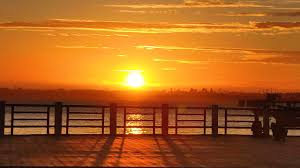Japanese Monument Stus and Caves of Japan
World War II on Biak Island
Biak is a small island located in the Cendrawasih Bay near the north coast of Papua Province, Indonesia. Biak's position is in the northwest of Papua New Guinea. Biak is the largest island in a chain of small islands, and has many atolls and coral reefs.
In the past, Biak Island was included in the territory of the Tidore Sultanate which divided it into 9 districts (uli siwa). During World War II, the Imperial Japanese Army's strategic airfield was there as a command base during the Pacific War. United States troops then took control of the island. On May 29, 1944, a battle between tanks took place in Biak.
Biak Numfor Regency has two large islands, namely Biak Island and Numfor Island, as well as 42 other small islands. It is bordered by Supiori Regency and the Pacific Ocean in the north and Yapen Strait in the south, while in the east it is bordered by the Pacific Ocean and in the west by Manokwari Regency.
The land area of this district is 2,602 square kilometers which is divided into 19 sub-districts. Five sub-districts are located on Numfor Island, 12 sub-districts are on Biak Island, and two sub-districts are in the archipelago.
the following are two tourist destinations left behind by the Japanese army in World War II on Biak Island
1. World War II Monument
The World War II Monument is located in Paray Village, Biak Kota District. It is located on the beach and one of the local tourist attractions.
The monument which was built in 1994 is an agreement between the Government of the Republic of Indonesia and the Government of Japan. This area consists of several parts, one of which is the main part in the form of a wall with a slightly curved shape that reads "Monument of World War II" in Indonesian, English, and Japanese.

Furthermore, at the front of the main part there are eight large stones in different sizes and shapes. This arrangement of stones symbolizes the eight fallen Japanese generals, three of whom are General Kirohito, General Yakoyama, and Konodera.
Inside the monument there is a room in the form of a 10 meter long hallway. This hallway contains the Japanese flag, photos of Japanese soldiers, and the cremated ashes of the bodies of Japanese soldiers who died in World War II when the Allies launched bombs on Biak Island. The ashes are stored in an aluminum box.
2. Binsari Cave or Japanese Cave Site
The site of Binsari Cave or Japanese Cave is located in Samofa District, west of Biak City. The site, also known as the military tunnel, was a hideout that housed 3000--5000 Japanese soldiers. They were bombed by the Allies in World War II.
It is said that the Binsari Cave is the place where the ancestors of the Biak people interacted with the supernatural. In Biak language, this cave is called Abyab Binsari. Binsari consists of two words, namely Bin which means woman and Sari which means old. When combined they mean old woman or grandmother.

This 250 meter long cave has a source of clean water. Because it was a former hiding place, this cave has a number of small chambers that function as a resting place as well as several other rooms that function as warehouses, storing food ingredients, and weapons rooms.
Those are the two historical tourist destinations that remind us of a terrible battle between the allied troops and the Japanese army, to respect the Japanese soldiers on the island of Biak, the local people continue to maintain this historical destination.
Come on, if you go to Biak Island, don't forget to visit, okay?




















.jpg)









.jpg)
.jpg)


















